Podcast review went into some detail this morning on the Warhammer Community site, but you can hear more by listening in to their Podcast which reviews the Blood Angel Codex!
Forge the Narrative's Podcast can be found on their site
http://forgethenarrative.net/podcast/ftn-episode-217-blood-angels-codex-review-and-more/
or a direct link to listen now
TN Episode 217 – Blood Angels Codex Review and MORE!
via Warhammer Community
https://www.warhammer-community.com/2017/12/06/tactical-toolbox-the-angels-blade-blood-angels-assault-armies-dec-6gw-homepage-post-2/
Paul: Hi All. I’m Paul Murphy from Forge the Narrative. I am a huge Blood Angels fan and I’m excited to get the opportunity to speak about them. The Blood Angels are known for their close combat prowess and lightning fast movement – and in these areas, the new codex delivers.
There are many ways you can approach building a Blood Angels army. At their core, they are a Space Marines Chapter and field their fighting forces based largely on the Codex Astartes. The new codex opens plenty of new options to Blood Angels that were previously only available to other Chapters, like Land Speeder Storms and Stormhawk Interceptors, meaning that they now have more flexibility than ever before.
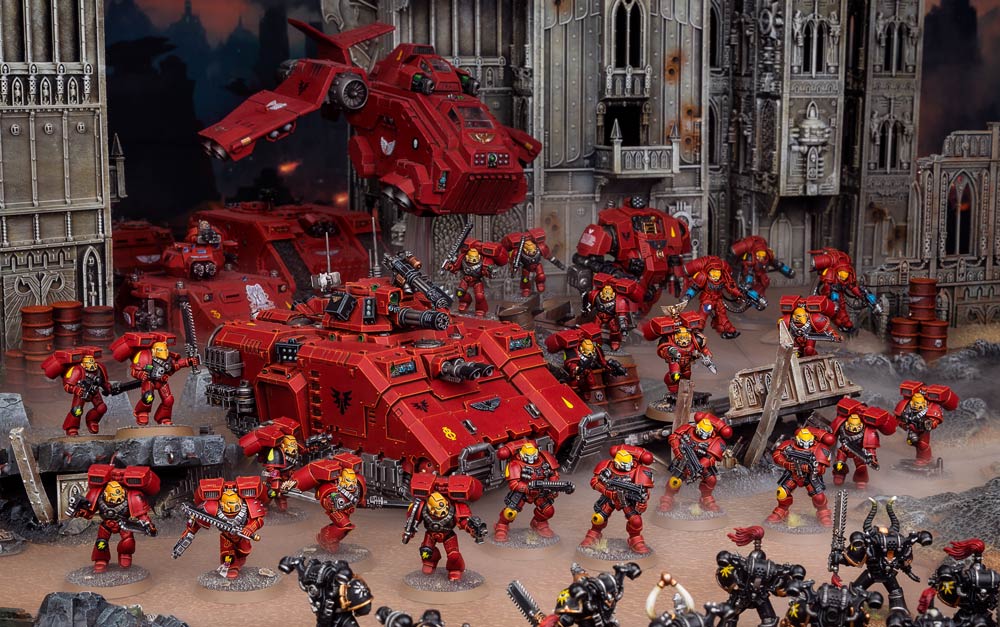
Infantry, Biker and Dreadnought Blood Angels have an ability known as the Red Thirst. In a round of combat in which the Blood Angels charged, were charged or made a Heroic Intervention, they add 1 to their wound rolls. This is big because any time you shift the result on a die, you are dramatically influencing the odds of your success. While this only affects certain units in close combat, it is formidable and really helps define the fighting style of the Chapter.
The Red Thirst is an ability that you can easily make the focus of your army. It is something you can always count on working. You know when it starts and you know when it stops. There is no way for the opponent to prevent you from gaining this bonus. If you, as a Blood Angels player, can find a way to make close combat inevitable, you’ll be able to maximise this ability.
Thankfully, the codex offers many ways to do this, even down to Troops selection. It is debatable which Troop option is the best, but the Red Thirst ability changes all of your potential choices into assault units. It is important to point out that, at worst, your Blood Angels units are wounding huge enemies like Knights and Primarchs on 5s in close combat. Every single one of your models has the potential to be a game-changing hero (very fitting for the noble sons of Sanguinius).
It will be easy to get distracted while making your Blood Angels army due to all the special units offered in the codex, but don’t forget that in a battle-forged Blood Angels detachment, Troops units can control an objective even if your opponent has more models in range. This benefit will win games.
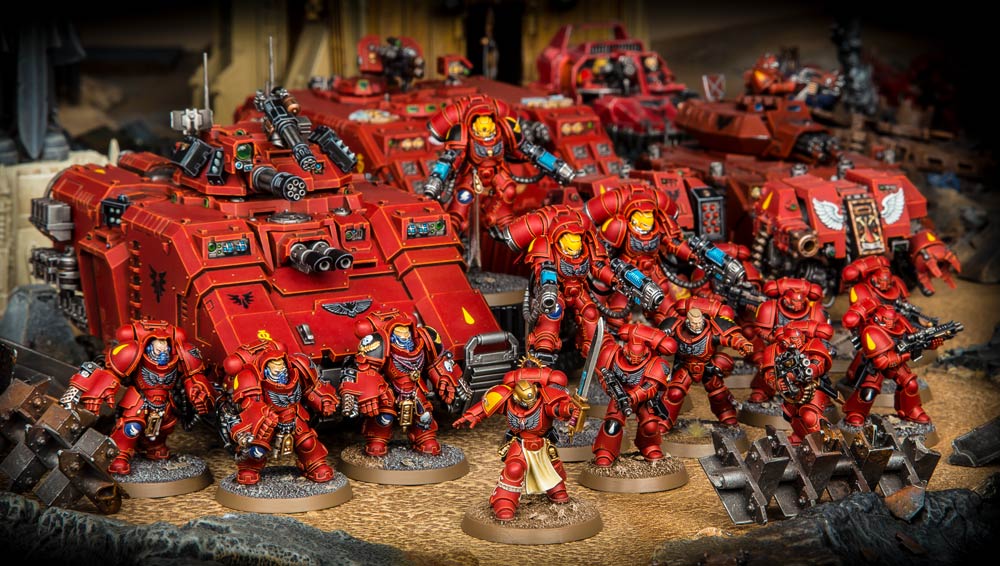
In the lightning-fast department, the Blood Angels have two signature assault units. These are the golden-armoured Sanguinary Guard and the black-clad Death Company.
The Death Company are wracked by psychic visions of their Primarch that send them into an unrecoverable state known as the Black Rage. This translates into giving them one extra attack on the turn they charge and the ability to shrug off wounds on the roll of a 6+. You have the option of equipping these guys with jump packs, and it is my heavy recommendation that you do. This gives them the ability to deploy via Jump Pack Assault, and it also makes them a better candidate for one of the new Blood Angels Stratagems, Forlorn Fury.
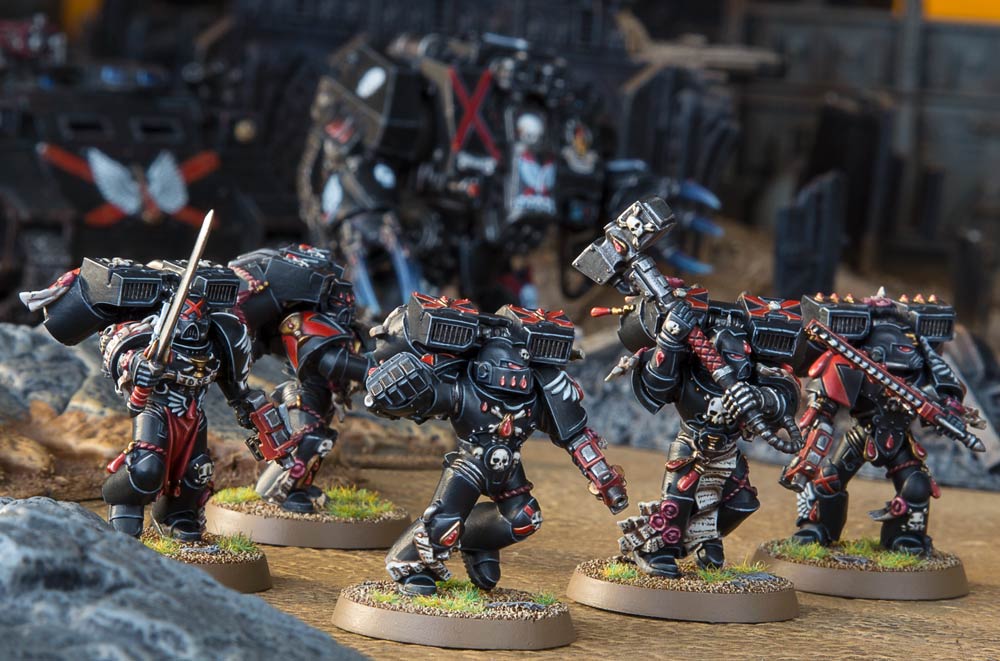
For two Command Points, Forlorn Fury allows you to nominate a Death Company unit at the start of the first battle round, but before the first turn begins, and immediately move them AND advance as if it were the Movement phase. A potential 12″ move makes for a staggering threat range on turn 1, which your opponent will need to react to. The fact that this Stratagem exists forces your opponent to account for it in their Deployment phase, and we may see the Death Company in a lot of builds. This unit is incredibly flexible with many wargear options. With these guys, I think it’s best to keep the majority of them armed with bolt pistols and chainswords. Chainswords are going to give them an extra attack, allowing each model to make four attack rolls on the charge. Four attacks with a basic weapon might not sound like a lot, but remember that with the Red Thirst you’re wounding most things on 3s and more numerous foes on 2s. If you sprinkle in a few power fists, you’ve got an amazingly killy unit for not a lot of points.
For one Command Point, you can also nominate one of your non-Primaris Chaplains, Captains or Lieutenants to fall to the Black Rage. They gain the Death Company keyword and the Black Rage ability for the duration of the battle. This is right in line with the Blood Angels theme, and the idea of a Captain with a thunder hammer, jump pack, five attacks on the charge, and wounding almost everything on 2s (with the Red Thirst) is very exciting.
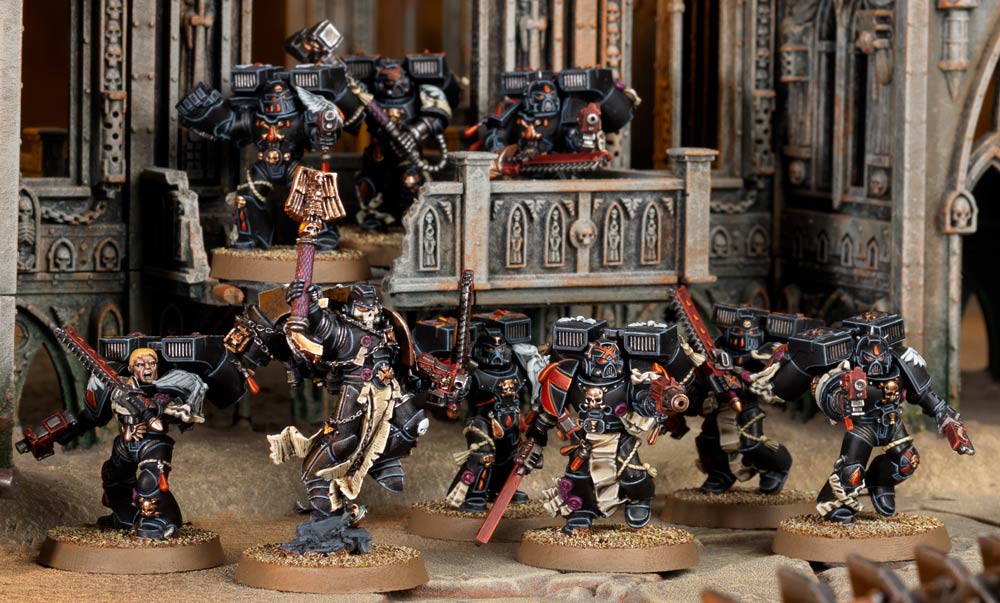
The Sanguinary Guard come with a power sword that does D3 damage, a 2+ armour save, and an Assault 2 bolt weapon with -1 AP, and have seen a points reduction in the codex compared to the index. Sanguinary Guard are almost twice the points cost of the Death Company, but they have two Wounds and a better armour save. Without changing their stock points cost, you can opt to equip this entire unit with power fists, and I’ll be very interested to see how many people go with this option.
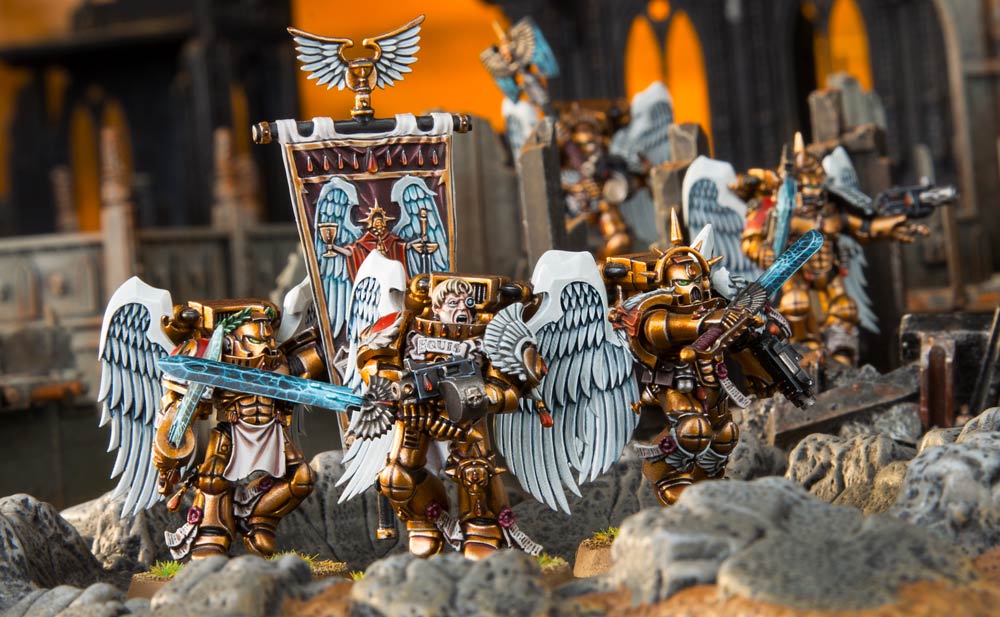
The Sanguinary Guard have a special rule that allows them to re-roll failed hit rolls if they are within 6″ of their warlord. This helps minimize the negative modifier that comes with the power fist. As with the Captain referenced above, the extra strength from the power fist and the Red Thirst ability will really help you pile wounds onto your opponent. These guys have a Move characteristic of 12″ and should be able to keep up with your warlord quite nicely.
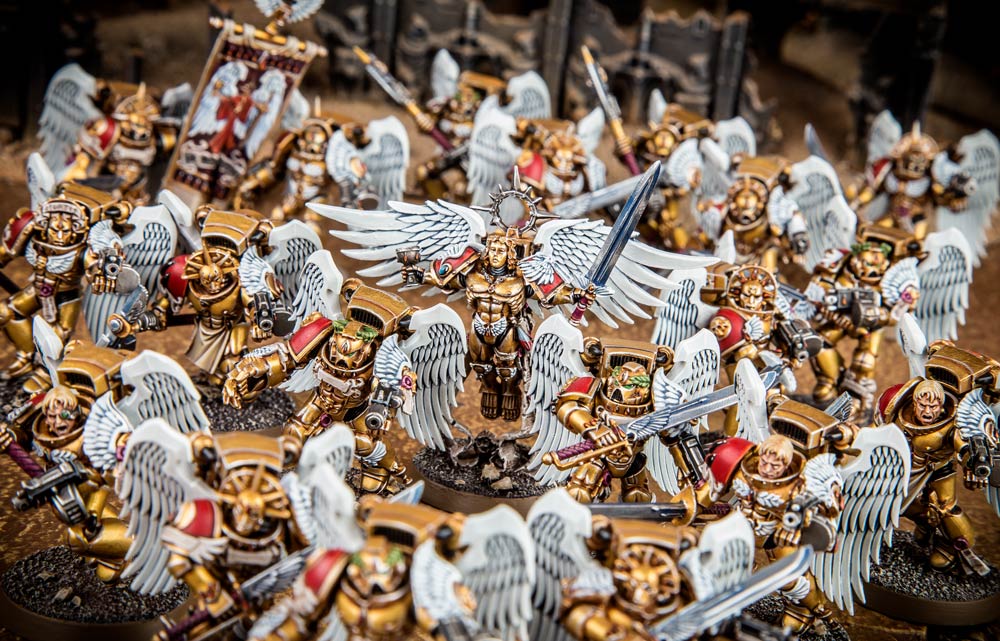
The Sanguinary Guard have the Jump Pack Assault rule, allowing you to deploy them high in the skies and drop them down to the battlefield right where you need them. These heirs of Azkaellon are flashy and can act as a significant distraction for your opponent. A base unit costs around 140 points for four models. You can deploy these guys all over the battlefield, forcing your opponent to deal with them.
For two Command Points, you can opt to use the Descent of Angels Stratagem before making a charge roll for a Blood Angels Jump Pack unit that was set up on the table this turn, rolling 3D6 to determine the unit’s charge range. This ability is difficult for your opponent to practically plan for and counter. This is important because, as a Blood Angels player relying mostly on assault, you have to establish and control the tempo of the game. With Stratagems like this one, you can seemingly be everywhere with high threat units.
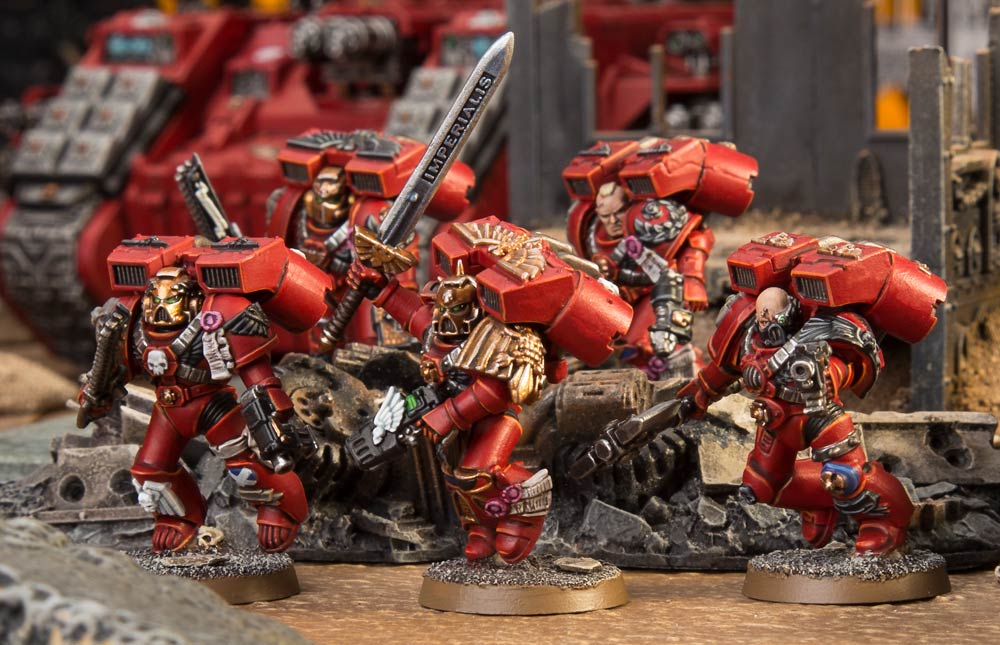
The goal of an assault-based army is to get into close combat. The Blood Angels have the right tools to establish credible threats and actually make it into close combat in a shooting-heavy environment.

